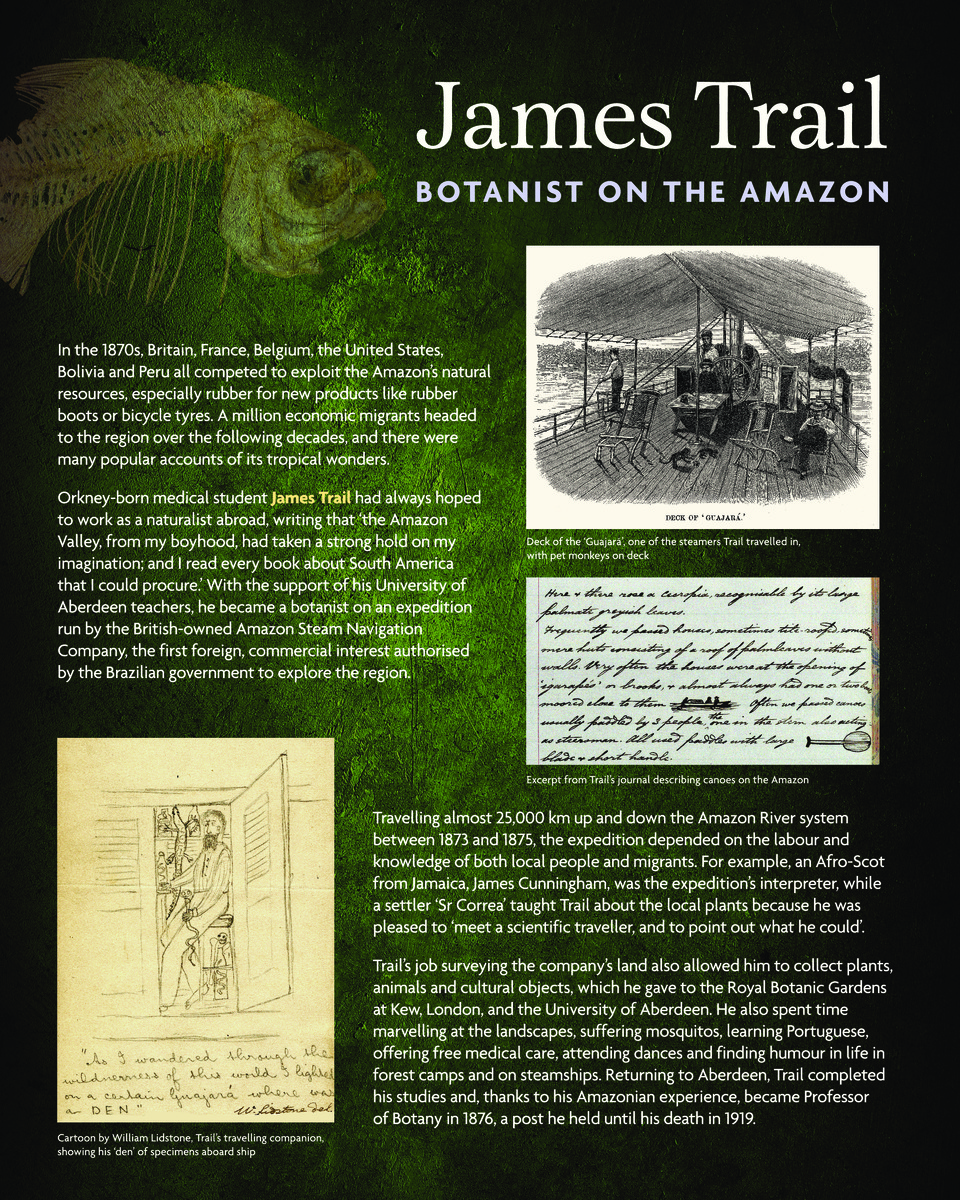James Trail
BOTANIST ON THE AMAZON
In the 1870s, Britain, France, Belgium, the United States, Bolivia and Peru all competed to exploit the Amazon's natural resources, especially rubber for new products like rubber boots or bicycle tyres. A million economic migrants headed to the region over the following decades, and there were many popular accounts of its tropical wonders.
Orkney-born medical student James Trail had always hoped to work as a naturalist abroad, writing that 'the Amazon Valley, from my boyhood, had taken a strong hold on my imagination; and I read every book about South America that I could procure.' With the support of his University of Aberdeen teachers, he became a botanist on an expedition run by the British-owned Amazon Steam Navigation Company, the first foreign, commercial interest authorised by the Brazilian government to explore the region.
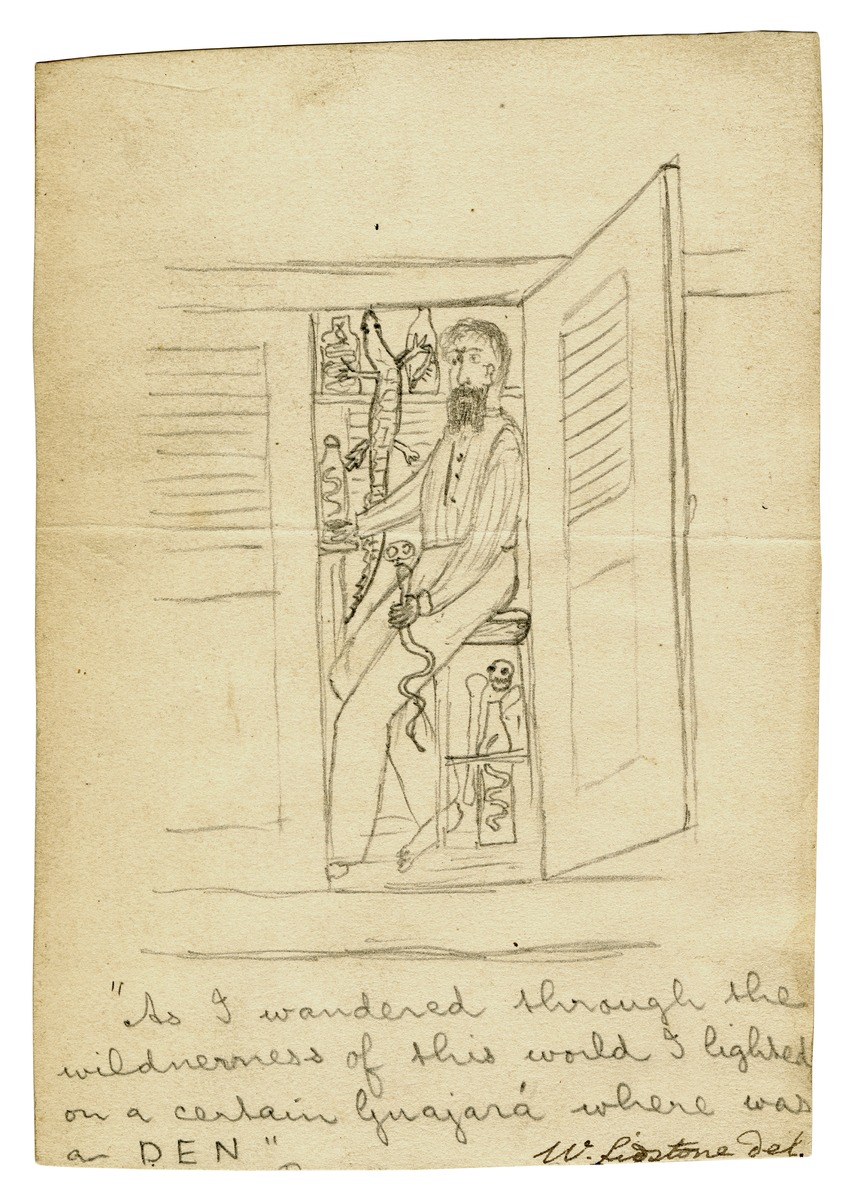
Cartoon by William Lidstone, Trail's travelling companion, showing his 'den' of specimens aboard ship
Travelling almost 25,000 km up and down the Amazon River system between 1873 and 1875, the expedition depended on the labour and knowledge of both local people and migrants. For example, an Afro-Scot from Jamaica, James Cunningham, was the expedition's interpreter, while a settler 'Sr Correa' taught Trail about the local plants because he was pleased to 'meet a scientific traveller, and to point out what he could'.
Trail's job surveying the company's land also allowed him to collect plants, animals and cultural objects, which he gave to the Royal Botanic Gardens at Kew, London, and the University of Aberdeen. He also spent time marvelling at the landscapes, suffering mosquitos, learning Portuguese, offering free medical care, attending dances and finding humour in life in forest camps and on steamships. Returning to Aberdeen, Trail completed his studies and, thanks to his Amazon experience, became Professor of Botany in 1876, a post he held until his death in 1919.
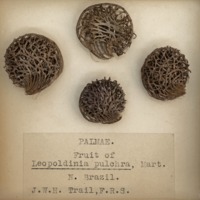
Palm fruit and seed specimens
Palms were the iconic plants of Amazonia and the tropics. Trail collected palm specimens for the prestige of finding and naming a plant which was newly identified by scientists, despite being well-known to the people of the region. Plants were also sought because they could become lucrative products, such as latex from rubber trees, but Amazonian palm oil did not turn out to be economically viable on a large scale.

Skull of a howler monkey
Trail took - or stole - four monkey skulls from an unoccupied house on the Rio Maués near the lowest rapids. He noted without apparent irony that 'the residents seemed to have gone away for a lengthened sojourn, yet the household utensils were simply laid aside in full view, so that anyone if desirous could readily carry them off'. He describes damage to the back of the skull 'owing to the Indians breaking them to extract the brains - a favourite article of food.'
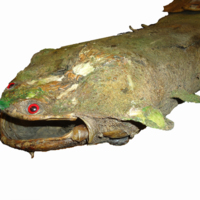
Mata mata turtle
This freshwater Amazon turtle was caught by Ambrose, a Beija Flor crew member, while Trail was collecting on land. Mata mata turtles are camouflaged to look like bark and dead leaves, and hide in the bottom of the river to ambush fish. Trail described it as ‘about as diabolical and impish looking as could well be imagined’. The turtle remained a live captive for several weeks before Trail noted in his journal ‘Returned on board and had the Mata mata turtle killed, and as far as possible prepared for preservation’. Most of Trail's zoological specimens are thought to be lost, but this one was 'rediscovered' during research for this exhibition.

Fish skeletons
This box of ten fish specimens was collected by Trail from various rivers, streams, and lakes in the Amazon Basin. Fish specimens were notoriously difficult to preserve in this period because of the delicacy of their bones, flesh and skin.
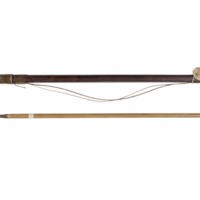
Bow and arrow
Trail purchased this bow and arrow in 1874 from Torquanto, a Wuy Jugu man who lived on the Rio Maués. Trail described the arrow as having a shaft made of a grass stem, with a wooden head tipped with barbed iron. The bow is made from the very hard wood of the Pau d'arco tree.
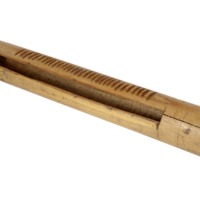
Musical instrument
A bamboo percussion instrument used by Wuy Jugu people. It was likely from the same area as the bow and arrow along the Rio Maués, a tributary of the River Amazon. A writer in 1863 describes one played at a Christmas party he attended at the village of Serpa as a 'notched bamboo tube, which produces a harsh rattling noise by passing a hard stick over the notches.' He felt that 'nothing could exceed the dreary monotony of this music...', but the local folk, a mix of people of African and indigenous ancestry, enjoyed the music and 'good humoured revelry prevailed on all sides'. The Way Jugu's traditional songs are well-regarded amongst Amazonian people for their music and poetic lyrics.
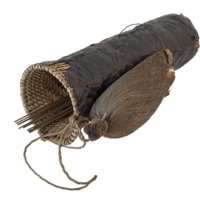
Quiver
Indigenous people of the Amazon basin used long blow guns with darts dipped in curare poison. This quiver, made from plaited vegetable strips coated in tree resin, was used to carry the darts while hunting. Attached to the quiver is a small bag containing white wool from the seed of the kapok tree. The hunter would pull out a piece of wool and roll it into a stopper around the end of the blowpipe dart. This stopper created enough friction to blow the dart through the pipe.
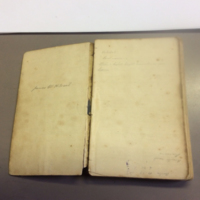
Trail’s notebook of palms
In this field notebook, Trail recorded his descriptions of various palm species. In 1876 his observations of 72 new palms were published as an article in the Journal of Botany. Dr João Barbosa Rodrigues, also searching for lucrative palms but for the Brazilian government, was briefly a guest of the survey. He later claimed that, in this article, Trail had usurped his right of describing and naming various palms.


